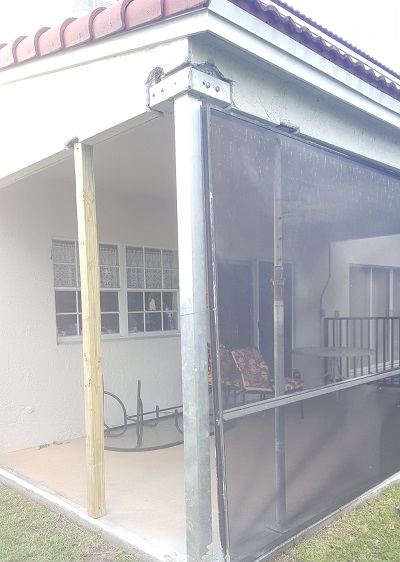
Rotting columns can be a significant concern for the structural integrity and aesthetics of a building. If left unaddressed, rot can spread, compromising the strength and stability of the columns. Repairing rotting columns involves identifying the extent of the damage, removing the affected areas, treating the remaining wood, and reinforcing or replacing the damaged sections. In this article, we will explore the steps involved in fixing rotting columns.
- Assess the Damage: The first step in fixing rotting columns is to assess the extent of the damage. Thoroughly inspect the columns to identify the areas affected by rot. Look for signs such as discoloration, softness, and crumbling wood. It’s essential to determine the cause of the rot, which is usually moisture-related, such as water leaks, inadequate drainage, or high humidity levels.
- Remove Rotted Sections: Once the damaged areas are identified, it’s necessary to remove the rot to prevent further spread. Use a chisel, saw, or other appropriate tools to carefully cut away the rotted sections of the column. Ensure that all the affected wood is removed, including any hidden or hard-to-reach areas. Take caution not to damage the surrounding sound wood during the removal process.
- Treat with Wood Preservative: After removing the rotted sections, treat the remaining sound wood with a wood preservative. This helps to kill any remaining fungus or rot spores and prevent future decay. Follow the manufacturer’s instructions for the application of the wood preservative, ensuring thorough coverage of the treated areas.
- Reinforce or Replace: Depending on the severity of the damage, you may need to reinforce or replace the rotted sections of the columns.
- Reinforcement: If the damage is minimal and the remaining wood is structurally sound, you can reinforce the columns using methods such as epoxy consolidants or wood fillers. Epoxy consolidants penetrate the wood fibers, strengthening the weakened areas. Wood fillers can be used to fill in voids or gaps left by the removed rot. Follow the product instructions for proper application and allow sufficient curing time before proceeding.
- Replacement: In cases where the rot has significantly compromised the structural integrity of the columns, replacement may be necessary. This typically involves removing the entire damaged column and installing a new one. When replacing the column, ensure that the new material is treated for rot resistance and matches the original design and dimensions.
- Waterproofing and Moisture Management: To prevent future rot and moisture-related issues, it’s crucial to implement effective waterproofing and moisture management strategies.
- Flashing: Install flashing around the base of the columns to prevent water infiltration. Flashing acts as a barrier between the column and the ground or adjacent materials, diverting water away from the wood.
- Drainage: Ensure proper drainage around the columns to prevent water accumulation. This can include grading the surrounding soil away from the columns, installing gutters or downspouts to direct water away from the structure, or implementing a French drain system if necessary.
- Ventilation: Adequate ventilation is essential to reduce moisture buildup. Ensure proper ventilation in crawl spaces or enclosed areas near the columns. This helps to promote air circulation and prevent excess moisture that can lead to rot.
- Regular Maintenance: To prolong the life of the columns and prevent future rot, regular maintenance is crucial. This includes periodic inspections for signs of damage, addressing any water leaks or moisture issues promptly, and reapplying wood preservatives or protective coatings as recommended by the manufacturer.
- Seek Professional Help if Needed: Fixing rotting columns can be a complex task, especially if the damage is extensive or if the columns are part of a load-bearing structure. It’s recommended to consult with a professional contractor or a structural engineer who specializes in wood repairs and restoration. They can assess the extent of the damage, provide guidance on the appropriate repair methods, and ensure the structural integrity of the columns.
In conclusion, fixing rotting columns involves assessing the damage, removing the rotted sections, treating the remaining wood, and reinforcing or replacing the damaged areas. Proper waterproofing, moisture management, and regular maintenance are essential to prevent future rot and prolong the life of the columns. Seeking professional assistance is advisable, especially for extensive damage or load-bearing structures. By addressing rotting columns promptly and effectively, you can restore the structural integrity and appearance of the columns while ensuring the safety and longevity of the building.
